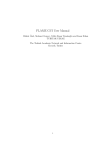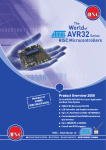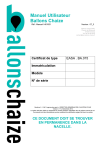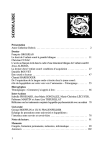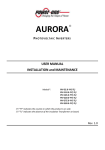Download FGR20BNa-M Report
Transcript
Report NO.: NTR20130090 Test Report No.: NTR100264-1 Applicant Name: Gree Electric Appliances Inc. of Zhuhai Page 1 of 42 Jinji West Road, Qianshan, Zhuhai, Guangdong 519070, P.R.China Test item: Duct type Air Conditioner Identification: FGR20/BNa-M Serial No.: Engineering sample Receipt No.: RZ00319378 Date of receipt: 2013.04.10 Testing location: Gree Electric Appliances Inc. of Zhuhai Jinji West Road, Qianshan, Zhuhai, Guangdong 519070, P.R.China Test specification: EN 14511-1,2,3,4:2011 Test Result: The test items passed the test specification(s). Testing Laboratory: Test laboratory of Gree Electric Appliances Inc. of Zhuhai(GTL) reviewed by: tested by: 2013-5-15 Majiedan 2013-5-15 Chen Zancheng Date Name/Position Signature Date Name/Position Signature Other Aspects: Abbreviations: P(ass) = passed F(ail) = failed N/A = not applicable N/T =not tested This test report relates to the a. m. test sample. Without permission of the test center this test report is not permitted to be duplicated in extracts. This test report does not entitle to carry any safety mark on this or similar products. TRF No.: EN 14511 Report NO.: NTR100264-1 Page 2 of 27 EN 14511 Clause Requirement - Test Result - Remark Verdict Summary of testing 1. The appliance was tested according to EN 14511. 2. All the tests were performedon the model FGR20/BNa-M as representive. 3. The samples are engineering samples without serial numbers. Test item particulars ..................................................: Class of temperature T1 Type .............................................................................: Duct type Degree of protection Indoor unit:IP20 Outdoor unit:IP24 Supply Connection .......................................................: Type Y attachment Possible test case verdicts: - test case does not apply to the test object .................: N/A - test object does meet the requirement .......................: P(Pass) - test object does not meet the requirement .................: F(Fail) Testing ..........................................................................: Date of receipt of test item ............................................: 2013.05.15 Date (s) of performance of tests....................................: 2013.05.01-2013.05.13 General remarks ¾This appliance is split type air conditioner, which consist of one outdoor unit and one indoor unit. ¾The indoor unit is a wall mounted type air conditioner, which is usually not accessible (only for maintenance purpose). It will be mounted 2,5 meters above the floor. ¾Cooling and heating modes are applied by reverse cycle method. In the heating mode, defrost operation may be applied. ¾The indoor unit is equipped with an infrared wireless battery powered remote control unit. Model list: Model Compressor model Indoor fan motor Outdoor fan motor FGR20/BNa-M SH090A4ALC FG1200A LW92E Note: TRF No.: EN14511 Report NO.: NTR100264-1 Page 3 of 27 EN 14511 Clause Requirement - Test Result - Remark Rating labels and marking: Match table: Whole model Indoor unit Outdoor unit FGR20/BNa-M FGR20/BNa-M(I) FGR20/BNa-M(O) Indoor unit: Outdoor unit: TRF No.: EN14511 Verdict Report NO.: NTR100264-1 Page 4 of 27 EN 14511 Clause Requirement - Test Result - Remark Verdict EN 14511-1:2011 1 Scope P This standard applies to : P factory-made units that can be ducted, factory-made liquid chilling packages with integral condensers or for use with remote condensers, factory-made units of either fixed capacity or variable capacity by any means, and air-to-air air conditioners which can also evaporate the condensate on the condenser side. —Packaged units, single split and multisplit systems —Single duct and double duct units This standard does not apply to : P —Installations used for heating and/or cooling of industrial processes —The units having their condenser cooled by air and by the evaporation of external additional water (see EN15218) In the case of units consisting of several parts, this European Standard applies only to those designed and supplied as a complete package, except for liquid chilling packages with remote condenser. Part load testing of units is dealt with in EN 14825. P According to EN 14825:2012; see appendix table P EN 14511-2:2011 4 Test condition P 4.1 Environment condition and electrical power supply reqirements P Environment condition table 1 or table 2 P Electrical power supply 397.5V 3N~ 50Hz P 4.2 Rating condition P Standard Rating Condition for heating mode P Indoor heat exchanger;outdoor heat exchanger (℃) Indoor: 20/-(DB/WB) Standard Rating Condition for cooling mode Indoor heat exchanger;outdoor heat exchanger (℃) P Outdoor: 7/6(DB/WB) P Indoor:27/19(DB/WB) P Outdoor:35/24(DB/WB) Application rating Condition for heating mode N/A Indoor heat exchanger;outdoor heat exchanger (℃) N/A TRF No.: EN14511 Report NO.: NTR100264-1 Page 5 of 27 EN 14511 Clause Requirement - Test Result - Remark Verdict Application rating Condition for cooling mode N/A Indoor heat exchanger;outdoor heat exchanger (℃) N/A EN 14511-3:2011 4.1 Basic principles 4.1.1 Heating capcacity See appended table P Heating capcacity determined by measurements on a calorimeter room or by the air enthalpy method By calorimeter room P The heating capacity of air-to-water, water-to-water heat pumps and liquid chilling packages by the directed method Air-to-air heat pump N/A 4.1.2 P The heating capcacity should be corrected for the heat from the fan or pump; N/A The fan or pump at the indoor heat eachanger is an The power of the fan is intergral part of the unit included into the total power input. N/A The fan or pump at the indoor heat eachanger is not an intergral part of the unit N/A The fan at the indoor unit is an intergral part of the unit. Cooling capacity Cooling capcacity determined by measurements on a calorimeter room or by the air enthalpy method P By calorimeter room The cooling capacity of air-to-water, water-to-water heat pumps and liquid chilling packages by the directed method 4.1.3 P N/A The cooling capcacity should be corrected for the heat from the fan or pump; P The fan or pump at the indoor heat eachanger is an The power of the fan is intergral part of the unit included into the total power input. P The fan or pump at the indoor heat eachanger is not an intergral part of the unit The fan at the indoor unit is an intergral part of the unit. N/A Heating recovery capacity No heating recovery N/A The heat recovery capacity of air-to-water, water-towater heat pumps and liquid chilling packages by the directed method N/A 4.1.4 Power input of fans for units without duct connection The fan motor absorbed power was included into the effective power absorbed by the unit 4.1.5 Power input of fans for units with duct connection With no duct connection P N/A Fan is the intergral part of unit N/A Fan is not the intergral part of unit N/A TRF No.: EN14511 Report NO.: NTR100264-1 Page 6 of 27 EN 14511 Clause Requirement - Test Result - Remark 4.1.6 Power input of liquid pumps No liquid pumps N/A 4.1.7 Units for use with remote condenser No remote condenser N/A 4.2 Test apparatus P 4.2.1 Arrangement of the test apparatus P 4.2.1.1 Gernaral requirement P The test apparatus shall be designed in such a way that all requirements on adjustment of set values, stability criteria and uncertainties of measurement according to this European Standard can be fulfilled. P 4.2.1.2 Test room for the air side Calorimeter room The velocity of the air flows through the room at the air inlet and air outlet do not exceed 1,5 m/s when the Any direct heat radiation by heating units in the test test object is switched off; room onto the unit or the temperature measuring The air inlet or air outlet point shall be avoided. orifices be not less than 1 m distant from the surfaces of The velocity of the air flows through the room at the test room the air inlet and air outlet do not exceed 1,5 m/s when the test object is switched off; The size of the test room shall be selected so that any resistance to air flow at the air inlet and air outlet of the tested unit is avoided. Verdict P P The air inlet or air outlet orifices be not less than 1 m distant from the surfaces of the test room 4.2.1.3 Appliance with duct connection No duct connection Ducted air systems shall be sufficiently air tight to ensure that the measured results are not significantly influently by exchange of air with the surroundings. 4.2.1.4 Appliance with integral pumps N/A No pumps For appliance with integral and adjustable water or brine pumps, the external static pressure will be set at the same time as the temperature difference. 4.2.1.5 Liquid chilling package for use with remote condenser Units for use with remote condenser are tested by using a water-cooled condenser, the characterstics of which shall enable the intended operationg conditions to be achieved. N/A N/A N/A No liquid chilling package N/A N/A 4.2.2 Installation and connection of the test object P 4.2.2.1 General P TRF No.: EN14511 Report NO.: NTR100264-1 Page 7 of 27 EN 14511 Clause Requirement - Test Result - Remark The test object shall be installed and connected for Intalled and connected the test as recommended by the manufacture in his according to installation installation and operational manual. The accessories manual。 (for example heating element) provided by option are not included in the test. Verdict P If a back-up heater is provided in option or not, it No electri-heater shall be switched off or disconnected to be excluded from the testing. For single duct units, the discharge duct shall be as short and straight as possibme but not less than 50cm to the wall, Split type unit without duct N/A For double duct units: the reqirements apply to both syuction and discharge ducts, unless the appliance is designed to be installed directly on wall. Without duct N/A For multisplit systems, the test shall be performed eith the sustem operatering at a capacity ratio of 1, or as close as possible. Single split system N/A Set the highest room temperature on the unit/system 30 control device in heating mode. P Set the lowest room temperature on the unit/system control device in cooling mode. P 16 If in the instructions, the manufacturer indicates a value for the temperature set on the control device for a given rating condition, then this value shall be used. 4.2.2.2 N/A For unit with open-type compressor the electric motor shall be supplied or sepecified by the manufacturer. The compressor shall be operated at the rotational speed specified by the manufacturer. Not opentype compressor N/A For inverter type control units, if the manufacturer gives instruction for the setting of the frequency for each rating condition, this seting shall be done. No instruction N/A Installation of unit consisting of several parts P a) The refrigerant lines shall be installed in 5m, specified by the accordance with the manufacturer instructions with a manufacturer minimum length of 5m and a greater leangth to a maximum of 7,5m if the constaints of the test installation does not possible. P b) The line shall be installed so that the difference in elevation does not exceed 2,5m. P c) The thermal insulation of the lines shall be applied accordance with the manufacturer’s instruction. P d) At least half of the connecting linges shall be exposed outside conditions, with the rest of the lines exposed to the inside conditions. P TRF No.: EN14511 Report NO.: NTR100264-1 Page 8 of 27 EN 14511 Clause Requirement - Test Result - Remark 4.2.2.3 Indoor units of multisplit system Single split system When testing a multisplit system in a calorimeter room, the air flow rate and the external static pressure shall be adjusted separately for each one of the ducted indoor units. When testing a multisplit system using the air enthalpy method, the air flow rate and the external static pressure shall be adjusted separately for each indoor unit, ducted or not. In case of equipment with non ducted indoor units tested using the air enthalpy method, the above requirement on ducted indoor units shall apply. 4.2.2.4 4.3 N/A N/A N/A N/A Measurements point P Temperature and pressure measuring points shall be arranged in order to obtain mean significant values. P For free air intake temperature measurements, it is required: P —either to have at least one sensor per square meter, with not less than four measuring points and by restricting to 20 the number of sensors equally distributed on the free air surface; P or to use a sampling device. It shall be completed by four sensors for checking uniformity if the surface area is greater than 1 m². N/A For control cabinet air conditioner, the inlet temperature at the evaporator is measured instead of the temperature inside the control cabinet. N/A For units consisting of a heat pump and a storage tank as a factory made unit, water inlet and outlet temperature measurements shall be taken at the inlet and outlet of the tank respectively. For water and brine, the density in formulae (1), (2) and (3) shall be determined in the temperature conditions measured near the volume flow measuring device. N/A N/A Uncertainties of measurement P The uncertainties of measurement shall not exceed the values specified in table 1. P - dry bulb temperature - wet bulb temperature - volume flow - static pressure difference - electric power - voltage - current - electrical energy 4.4 Verdict Test procedure TRF No.: EN14511 ± 0,2 K ± 0,4K ±5% ± 5 Pa (⊿p ≤100 Pa) or ± 5 %(⊿p > 100 Pa) ±1% ± 0,5 % ± 0,5 % ±1% P Report NO.: NTR100264-1 Page 9 of 27 EN 14511 Clause Requirement - Test Result - Remark 4.4.1 General P 4.4.1.1 All units P The test condition are given in EN14511-2 P If liquid heat transfer media other than water are used, the specified heat capacity and density of such heat transfer media shall be determined and taken into consideration in the evalustion. Table 4 states permissible deviations of the measured values from the test conditions. Verdict N/A Mean: Tem±0.3K P AF±5% Indiv: Tem±1K AF±10% SP±10% 4.4.1.2 4.4.1.3 4.4.1.4 Non ducted units P For non ducted units, the adjustable settings such as louvers and fan speed shall be set for maximum air flow. P For inverter type control units, if the manufacturer indicates a speed of the fan different from the maximum one to set on the control device for a given rating condition, then this speed shall be used. Units ducted on the indoor heat exchanger P N/A The volume flow and pressure difference shall be related to srandard air and with dry evaporator. N/A The air flow rate given by the manufacturer shall be converted into standard air condtions. The air flow rate setting shall be made when the fan only is operating, at standard air conditions. N/A The rated air flow rate given by the manufacturer shall be set and resulting external static pressure measured. N/A If the ESP is lower than the minimum value given in Table 2 (or Table 3), the air flow rate is decreased to reach this minimum value. If the ESP is greater than twice the minimum value given in Table 2 (or Table 3), the air low rate is increased to reach twice this minimum value. N/A If the ESP is greater than the minimum value given in Table 2 (or Table 3) but not greater than twice this minimum value, then keep this ESP. N/A Units ducted on the outdoor heat exchanger N/A The volume flow and the pressure difference shall be related to standard air and with dry heat exchanger. N/A TRF No.: EN14511 N/A Report NO.: NTR100264-1 Page 10 of 27 EN 14511 Clause Requirement - Test Result - Remark The air flow rate given by the manufacturer shall be converted into standard air conditions. The air flow rate setting shall be made when the fan only is operating. The rated air flow rate given by the manufacturer shall be set and the resulting external static pressure (ESP) measured. If the ESP is lower than 30 Pa, the air flow rate is decrease to reach this minimum value. If the manufacturer’s installation instructions state that the maximum allowable discharge duct length is less than 1m, then the unit can be considered as a free delivery unit and be tested as a non ducted outdoor unit with an ESP of 0 Pa. Verdict N/A N/A N/A N/A 4.4.2 Output measurement for water (brine)-to-water (brine) and water (brine)-to-air units 4.4.2.1 Steady state conditions N/A This condition is considered obtained and Mean: Tem±0.3K maintained when all the measured quantities remain AFW±5% constant without having to alter the set values, for a minimum duratuion of 1h, with respect to the Indiv: Tem±1K tolerances given in table 4. Periodic fluctuations of measured quantities caused by the operation of the AFW±10% regulation and control devices are permissible, on condition the mean value of such fluctuations does SP±10% not exceed the permissible deviations listed in table 4. N/A Measurement of heating capacity, cooling capacity and heat recovery capacity N/A For the output measurement it is necessary to record all the meaningful data continuously. In the case of recording instruments which operate on a cyclic basis, the sequence shall be adjusted such that a complete recording is effected at least once every 30s. N/A The output shall be measured in the steady state condition. The duration of measurement shall be not less than 35min. N/A 4.4.2.2 Air-to-air 4.4.3 Output measurement for cooling capacity of air-towater and air-to-air units 4.4.3.1 Steady state conditions P This condition is considered obtained and maintained: P When all the measured quantities remain constant without having to alter the set values P For a minimum duration of 1 h, with respect to the tolerances given in Table 4. P TRF No.: EN14511 Air-to-air unit N/A P Report NO.: NTR100264-1 Page 11 of 27 EN 14511 Clause 4.4.3.2 Requirement - Test Result - Remark Periodic fluctuations of measured quantities caused by the operation of regulation and control devices are permissible, on condition the mean value of such fluctuations does not exceed the permissible deviations listed in table 4. No period Verdict N/A Measurement of cooling capacity P Record all the meaningful data continuously P At least once every 30s in case of recording instruments operate on a cyclic basis. P Measured in the steady state condition P Not less than 35min duration P 4.4.4 Output measurement for heating capacity of airto-air units with the air enthalpy method and of air-to-water units P 4.4.4.1 General P The test procedure consists of three periods: a preconditioning period, an equilibrium period, and data collection period.The duration of the data collection differs depending upon whether the heat pump’s operation is steady state or transient. P Annex C gives a flow chart of the procedure and pictorially represents most of the different test sequences that are possible when conducting a heating capacity test. P Preconditioning period P The test room reconditioning apparatus and the heat pump under test shall be operated until the test tolerances specified in Table 4 are attained for at least 10 min. P 4.4.4.2 4.4.4.3 A defrost cycle may end a preconditioning period.If a No defrost cycle happened. defrost cycle does end a preconditioning period,the heat pump shall operate in the heating mode for at least 10 mm after defrost termination prior to beginning the equilibrium period. N/A It is recommended that the preconditioning period end with an automatic or manually-induced defrost cycle when testing at application rating conditions for outdoor air stated in Table 3 and Table 9 of EN14511-2:2011. N/A Equilibrium period P The equilibrium period immediately follows the preconditioning period or the defrost cycle and a recovery period of 10 min that ends a preconditioning period. P TRF No.: EN14511 Report NO.: NTR100264-1 Page 12 of 27 EN 14511 Clause 4.4.4.4 Requirement - Test Result - Remark A complete equilibrium period is one hour in duration. P Except as specified in 4.4.4.7, the heat pump shall operate while meeting the test tolerances specified in Table 4. P Data collection period P The data collection period immediately follows the equilibrium period. P Data shall be sampled at equal intervals that span every 30s or less, accepted during defrost cycles as specified below. P During defrost cycles, plus the first 10 min following No defrost cycle happened. defrost termination, data used in evaluating the integrated heating capacity and the integrated power inpu of the heat pump shall be sampled more frequently, at equal intervals that span every 10s or less. N/A For heat pumps that automatically cycle off the No defrost cycle happened. indoor fan during a defrost,the contribution of the net heating delivered and/or the change in indoor-side dry bulb temperature shall be assigned the value of zero when the indoor fan is off,if using the indoor air enthalpy method.If using the calorimeter test method,the integration of capacity shall continue while the indoor fan is off, N/A The difference between the leaving and entering temperatures of the heat transfer medium at the indoor heat exchanger shall be measured. 4.4.4.5 4.4.4.6 Verdict Test procedure:When a defrost cycle ends the preconditioning period P No defrost cycle happened during the heating capacity test. N/A If the quantity % AT exceeds 2.5% during the first 35min of the data collection period, the heating capacity teat shall be designated a transient test. N/A If the heat pump initiates a defrost cycle during the equilibrium period or during the first 35min of the data collection period,the heating capacity test shall be designated a transient test. N/A If the above conditions do not occur and the test tolerances specified in Table 2 are satisfied during both the equilibrium period and the first 35 min of the data collection period,then the heat capacity test shall be designated a steady-state test.Steady-state tests shall be terminated after 35min of data collection. N/A Test procedure:When a defrost cycle does not end the preconditioning period. TRF No.: EN14511 No defrost cycle happened during heat capacity test. N/A Report NO.: NTR100264-1 Page 13 of 27 EN 14511 Clause Requirement - Test 4.4.4.6.1 If the heat pump initiates a defrost cycle during the equilibrium period or during the first 35mm of the data collection period,the heating capacity test shall be restarted as specified. N/A 4.4.4.6.2 If the quantity %AT exceeds 2.5% any time during the first 35min of the data collection period,then the heating capacity test procedure shall be restarted as specified in 4.4.4.6.3 N/A Prior to the restart,defrost cycle shall occur,This defrost cycle may be manually initiated or delayed until the heat pump initiates an automatic defrost. N/A If either 4.4.4.6.1 or 4.4.4.6.2 apply,then the restart shall begin 10min after the defrost cycle terminates with a nes equilibrium period of one hour. N/A This second attempt shall follow the requirements of 4.4.4.3 and 4.4.4.4 and the test procedure of 4.4.4.5. N/A 4.4.4.6.4 If the conditions specified in 4.4.4.6.1 or 4.4.4.6.2 do not occur and the test tolerances specified in Table 4 are satisfied during both the equilibrium period and the first 35min of the data collection period,then the heat capacity test shall be designated a steady-state test.Steady-state tests shall be terminated after 35min of data collection. N/A 4.4.4.7 Test procedure for transient tests N/A When,in accordance with 4.4.4.5 a heating capacity test is designated a transient test,the following adjustments shall apply. N/A To constitute a valid transient heating capacity tests,the test tolerances specified in Table 5 shall be achieved during both the equilibrium period and the data collection period. N/A The test tolerance parameters in Table 5 shall be determined throughout the equilibrium and data collection periods.All data collected during each interval,H or D,shall be used to evaluate compliance with the Table 5 test tolerances. N/A The data collection period shall be extended until 3 h have elapsed or until the heat pump completes three complete cycles during the period,whichever coours first. N/A Applies when the heat pump is in the heating mode,except for the first 10mm after termination of a defrost cycle. N/A Applies during a defrost cycle and during the first 10 mm after the termination of a defrost cycle when the heat pump is operating in the heating mode. N/A 4.4.4.6.3 TRF No.: EN14511 Result - Remark Verdict Report NO.: NTR100264-1 Page 14 of 27 EN 14511 Clause Requirement - Test 4.4.5 Output measurement for heating capacity of air-toair units with the calorimeter room N/A 4.4.5.1 General N/A N/A 4.4.5.2 The test procedure consists of two periods: an equilibrium period, and a data collection period. The duration of the data collection differs depending upon whether the heat pump’s operation is steady state or transient. Equilibrium period N/A 4.4.5.3 The test room reconditioning apparatus and the heat pump under test shall be operated until the test tolerances specified in Table 4 are attained for at least 1 h, except if a defrost occurs during this period in which case the test tolerances specified in Table 5 apply. If a defrost occurs during the equilibrium period, then the test procedure described in 4.4.5.5 applies. Data collection period N/A 4.4.5.4 Data shall be sampled at equal intervals that span every 30 s or less, except during defrost cycles as specified below. The duration of measurement shall be not less than 70 min. General Test Procedure N/A 4.4.5.5 If a defrost occurs before the start of the data collection period, or if the quantity %ΔT exceeds 2,5 % during the data collection period, the heating capacity test shall be designated a transient test (see 4.4.5.5). Likewise,if the heat pump initiates a defrost cycle during the equilibrium period or during the data collection period, the heating capacity test shall be designated a transient test. If the above conditions do not occur and the test tolerances specified in Table 4 are satisfied during both the equilibrium period and the data collection period, then the heat capacity test shall be designated a steadystate test. Steady-state tests shall be terminated after at least 70 minutes of data collection. Test procedure for transient tests When, in accordance with 4.4.5.4, a heating capacity test is designated a transient test, the following adjustments shall apply. TRF No.: EN14511 Result - Remark Verdict N/A N/A N/A N/A N/A N/A N/A Report NO.: NTR100264-1 Page 15 of 27 EN 14511 Clause Requirement - Test To constitute a valid transient heating capacity tests, the test tolerances specified in Table 5 shall be achieved during both the equilibrium period and the data collection period. As noted in Table 5, the test tolerances are specified for two sub-intervals. Interval H consists of data collected during each heating interval, with the exception of the first 10 min after defrost termination. Interval D consists of data collected during each defrost cycle plus the first 10 min of the subsequent heating interval. All data collected during each interval, H or D shall be used to evaluate compliance with the Table 5. Data from two or more H intervals or two or more D intervals shall not be combined and then used in evaluating Table 5 compliance. Compliance is based on evaluating data from each interval separately. The data collection period shall be extended until 3 hours at least have elapsed and until a full number of complete cycles have elapsed, except if the medium time interval for a full cycle is greater than 2h, in which case the data collection period shall be of one full cycle only or 4h, whichever is the shortest. A complete cycle consists of a heating period and a defrost period; from defrost termination to defrost termination. With this procedure, the maximum duration of the data collection period is 4 h. During defrost cycles, plus the first 10 min following defrost termination, data used in evaluating the integrated heating capacity and the integrated power input of the heat pump shall be sampled more frequently, at equal intervals that span every 10 s or less. When using the calorimeter room method, these more frequently sampled data include all measurements required to determine the indoor-side capacity. For heat pumps that automatically turn off the indoor fan during a defrost cycle, the integration of capacity shall continue while the indoor fan is off. Result - Remark Verdict N/A N/A N/A N/A N/A 4.5 Test results P 4.5.1 Data to be recorded P Data to be recorded for the capacity tests are given in table 6, and these data shall be the mean values taken over the period. P Cooling capacity and heat recovery capacity calculation. P The cooling capacity and heat recovery capacities shall be determined from the set of cooling and heat recovery capacities recorded over the data collection period. P Heating capacity calculation P 4.5.2 4.5.3 TRF No.: EN14511 Report NO.: NTR100264-1 Page 16 of 27 EN 14511 Clause Requirement - Test 4.5.3.1 Steady state capacity test P An average capacity shall be determined from the set of heating capacities recorded over the 35min data collection period. P 4.5.3.2 Result - Remark Verdict Transient capacity test N/A For equipment where one or more complete cycle occurs during the data collection period, the following shall apply. N/A The average heating capacity shall be determined using the integrated capacity and the elapsed time corresponding to the total number of complete cycles that occurred over the data collection period. N/A For equipment where no complete cycle occurs during the data collection period,the following shall apply. N/A The average heating capacity shall be determined by using the integrated capacity and the elapsed time corresponding to the total data collection period. N/A 4.5.4 Effective power input calculation P 4.5.4.1 Steady state test P An average electric power input shall be determined from the integrated electrical power over the same data collection period than the one used for the heating/cooling capacity or heat recovery capacity calculation. P 4.5.4.2 Transient with defrost cycle N/A An average electric power input shall be determined on the basis of the integrated electrical power and the time corresponding to the total number of complete cycles during the same data collection period as the one used for the heat capacity calculation. N/A Transient without defrost cycle N/A An average electric power input shall be determined on the basis of the integrated electrical power and the time corresponding to the same data collection period as the one used for the heat capacity calculation. N/A 5 Heat recovery test for air-cooled multisplit systems N/A 5.1 Test installation N/A 5.1.1 General 4.5.4.3 TRF No.: EN14511 Report NO.: NTR100264-1 Page 17 of 27 EN 14511 Clause 5.1.2 5.1.3 5.1.4 5.2 5.3 Requirement - Test Result - Remark Verdict The heat recovery capacity of the system is determined by measurements in a three room calorimeter or by the air enthalpy method using two or three rooms.The three rooms shall consist of one outdoor and two indoor rooms, one at the heating condition and the other at the cooling condition.The two room air enthalpy method shall have one room at the outdoor condition and the other at the common indoor side condition given in Table 21 of EN 14511-2:2011. N/A The calorimeter room and air enthalpy methods are described in annex A and annex B respectively.Each calorimeter room shall satisfy the requirements of annex A and the test facilities for the air enthalpy method shall satisfy the requirements of annex B. N/A Three-room calorimeter method N/A If measurements are made by the calorimeter method,then the testing of a heat recovery system shall need a three-room calorimeter test facility.The indoor units in the cooling mode shall be assembled in one room and the indoor units in the heating mode in the other.The outdoor unit shall be installed in the third room. N/A Three-room air-enthalpy method N/A The indoor units in the cooling mode shall be assembled in one room and the indoor units in the heating mode in another room;the outdoor unit shall be installed in the third room. N/A Two-room air-enthalpy method N/A All indoor units, either operating in cooling or heating mode, are assembled in one indoor room.The outdoor unit shall be installed in the other room. N/A All units operating in the heating mode shall be connected to a common plenum,all units operating in the cooling mode shall be connected to another common plenum,both in accordance with the requirements established in annex B. N/A Test procedure N/A The heat recovery test shall be carried out with all operating indoor units. N/A For ducted indoor units,the individual external static pressure of each indoor unit is set by adjusting a damper located in the duct length connecting the discharge area of the unit to the common plenum. N/A Test results N/A TRF No.: EN14511 Report NO.: NTR100264-1 Page 18 of 27 EN 14511 Clause Requirement - Test Result - Remark Verdict Test results are recorded and expressed as specified in 4.5. N/A The references of the indoor units operating in cooling mode and of the indoor units operating in heating mode shall be specified. N/A 6 Test report P 6.1 General information P 6.2 Test report should at least contain: P a) date; See appended test table P b)test institute; c)test location; d)test method; e)test supervisor; f)test object designation: Type;serial number;name of the manufacturer; year of initial installation; g)typen of refrigerant; h)mass of refrigerant; i)properties of fluids; j)reference to this European Standard 6.2 Additional information P Additional information given on the rating plate shall be noted and any other information relevant for the test. Particularly, it shall be strated whether the test is performed on a unit new or not. In the case of a test performed on a unit in use, information relative to the year of installation and heat exchange tubes cleaning shall be given. 6.3 New unit use Rating test results P The rating capcacites, power inputs, COP, EER, internal or external static pressure shall be given together with the rating conditions. P EN 14511-4:2011 4 Requirements P 4.1 General P Except where otherwise stated, tests shall be conducted as described in EN 14511-2 and EN 14511-3. P Temperature operating range P 4.2 TRF No.: EN14511 Report NO.: NTR100264-1 Page 19 of 27 EN 14511 Clause Requirement - Test 4.2.1 Starting test P The unit shall be capable of operating within the limit of use indicated by the manufacturer. P For every condition stated in Table 1, and for both The unit start up and operate cooling and heating mode where applicable, the unit for more than 30min shall start up and operate for at least 30 min, without continuously without stop. being stopped by the safety devices. P Test at maximum operating conditions(cooling mode) P When operated at conditions stated in Table 2 during 1h,then switch off for 3 min,and then switched on again for 1h,the unit shall meet the following requirements: P 4.2.2 Result - Remark Verdict ---- the unit shall suffer no damage; No any damage P ---- the unit motor shall operate continuously for the first hour without tripping of the motor overload protective devices; The unit can operate continuously without any trip. P ---- after the shut-down period of 3 min,the unit shall restart automatically no more than 5 min after restarting of the compressor; After the shut-down period of 3 min, the unit can restart automatically. P ---- The unit motor shall operate again continuously The unit can operate for the rest of the second hour without tripping of the continuously without any trip. motor overloads protective devices. P 4.2.3 Freeze-up test P 4.2.3.1 Air-cooled unit P After the unit has operated for 6 h at the conditions stated in Table 3,and after the last freeze up cycle has completed,the following requirements shall be fulfilled: 4.2.3.2 Condition: indoor 21/15 P outdoor 21/15℃ Operate for 6 h. ---- no ice shall have accumulated on the evaporator; P ---- no ice shall drip from the unit;; P ---- no water shall drip or be blown off the unit into the room. P Water-cooled units Air cooled N/A After the unit has operated for 6h at the conditions stated in Table 3 the following requirements shall be fulfilled: N/A ---- air flow through the unit shall not have dropped by more than 5%; N/A NOTE It shall be assured that the air flow through the unit is not adjusted during the test by some automatic control device. N/A TRF No.: EN14511 Report NO.: NTR100264-1 Page 20 of 27 EN 14511 Clause Requirement - Test ---- the water temperature difference through the unit shall not have dropped by more than 30%; 4.3 4.4 4.5 Result - Remark Verdict N/A Outside the operating range P If operating outside the temperature range can cause damage to the unit,it shall be provided with safety devices which ensure that the unit suffers no damage when the operating limits of use indicated by the manufacturer are exceeded and remains capable of operating when coming back within these limits.A safety device that does not automatically reset may trip provided that a warning device is filled. P The manufacturer shall indicate any safety devices provided and their operating conditions according to 7.2.3. P Shutting off the heat transfer medium flows P To check the correct operating of the safety devices on the unit,the following faults shall be simulated consecutively,The unit shall have attained steady state in the standard rating conditions according to Tables 3 to 23 of EN14511-2:2011 for 30min before every fault is simulated.Each fault simulated shall be maintained for at least 1h. P a) Shutting off the heat transfer medium flow at the outdoor heat exchanger. P b) Shutting off the heat transfer medium flow at the indoor heat exchanger. P c) Shutting off the heat transfer medium flow at the heat recovery heat exchanger where applicable. P The unit shall suffer no damage and shall remain capable of operating after restoration of the flow rates.A safety device that does not automatically reset may trip provided that a warning device is fitted. P For units with defrosting system,an additional test will be conducted at the test conditions specified in Table 4 by shutting off the heat transfer medium flow at the indoor heat exchanger ,at the beginning of the defrosting phase. P ---- the saturated temperature corresponding to the pressure measured at the suction of the compressor shall not have decreased by more than 2K. P Complete power supply failure P TRF No.: EN14511 Report NO.: NTR100264-1 Page 21 of 27 EN 14511 Clause 4.6 Requirement - Test Result - Remark Verdict Complete power supply failure lasting approximately 5s shall be simulated.The unit shall have attained steady state conditions before the fault simulation,at the standard rating condition according to Table 3 to 15 of EN 14511-2:2011. P The unit has to restart automatically within 30 min. When the manufacturer states that the unit does notautomatically restart, fault detection is necessary. The unit is checked for any damage sustained during the test and if any safety devices have operated during the test. P Condensate draining and enclosure sweat test P In heating mode,draining of condensate,including that formed on the enclosure,shall be made correctly when operating at the standard rating conditions given in Tables 3 to 23 of EN 14511-2:2011. P P In cooling mode,draining of condensate,including that formed on the enclosure,shall be made correctly when operating at conditions given in Table 5. 4.7 During the test of 4h no condensed water shall drip,run or blow off the unit except through the drain. P For indoor units,drain holes shall be provided with suitable pipe connection,the minimum diameter of which shall be 12mm. P Defrosting(where applicable) P For air-to-air and air-to-water units, the functioning of any defrosting system shall be verified under any one of the application rating conditions with an outdoor air temperature of 2(1) °C (see Table 3,Tables 12 to 15 and Table 19 of EN 145112:2011), where frosting occurs. P At least three successive frosting/defrosting cycles shall be repeated without running in progressively deteriorating average performances. P There shall not be growth of ice in and around the drip tray. 4.8 5 Other requirements P Components in air handling systems, such as fans, filters, heat exchangers, etc., shall be easily accessible and resistant for cleaning purposes recommended by the manufacturer. P Marking TRF No.: EN14511 See the rating labels P Report NO.: NTR100264-1 Page 22 of 27 EN 14511 Clause Requirement - Test Result - Remark Each unit shall have a durable, permanently fixed rating plate that is easily readable or accessible when the unit is in position for use, bearing at least the following information in addition to information required by safety standards. Label attached on indoor and outdoor unit Verdict P In the case of units consisting of several parts which can be made by different matching,only items a) and b) are to be indicated, where item b) applies to each part. P Items c) and d) depended on the considered matching and shall be indicated in the manufacturer’s data sheet. P a) manufacturer or supplier; P b) manufacturer’s model designation and serial number; P c) the cop and/or EER to three significant figures and the standard rating condition at which it is measured according to tables 3 to 15 of EN145112:2004; P d)heating/cooling capacity in kilowatts, with two digits after the decimal comma but not more than 3 significant figures at the test condition given in item c) of clause 5. P e)for control cabinet air conditioners, the sensible cooling capacity in kilowatts,with one digit after the decimal comma but more than 3 significant figures at the test condition given in item c) of clauses. P Further information may be provided with regard to rating only the other rating conditions given in tables 3 to 23 of EN14511-2:2011are to be used. P See appended table 6 for EN14511-4 6 Technical data sheet 6.1 General description P 6.2.3 Sound characteristics P The manufacturer shall provide the sound power level and the corresponding test method according to EN 12102 6.3 Declared on the name plate P P Electrical characteristics P The manufacturer shall specify the electrical the characteristics in accordance with EN 60035-2-40 or EN 60204-1 as applicable and: P — maximum starting current of the unit, as defined in EN 61000-3-11; / — total power input and current at the rated point,excluding the starting period; See the name plate TRF No.: EN14511 N/A P Report NO.: NTR100264-1 Page 23 of 27 EN 14511 Clause Requirement - Test Result - Remark — reactive power or power factor at the rated point,for units with a total power input greater than 10KW; 6.4 Verdict N/A — power input of fan and pump if included in the units; P Operating range P The manufacturer shall specify: -7~43℃ P — limits of use (temperatures and flows); — whether there are devices fitted which do not allow the unit to operate when these limits are exceeded; 7 Instructions P 7.1 General P If not already required by other standards, the manufacturer shall provide the information as described. P 7.2 Physical description P 7.2.1 Refrigerant ,air and /or liquid circuits P The manufacturer shall: P In the manual and the name Specify the refrigerant, air and liquid circuits preferably providing circuit diagrams, showing every plate functional unit,control and safety device and specifying their type; P If the unit uses water in the hest exchangers specify the water capacity contained in the unit,and specify either the constructional materials of the heat exchangers or the water quality; Air to air P If used, specify the type of brine and the concentratuion into any othert liquid; Air to air P Specify the type of oil to be used in the compressor Compressor: SH090A4ALC P Oil: FV-50S 7.2.2 Additional heating devices,when integral to the unit The manufacturer shall specify the type and location of additional heating devices and their control and safety devices. 7.2.3 No additional heating element N/A N/A Control and sefety P The manufacturer shall: P TRF No.: EN14511 Report NO.: NTR100264-1 Page 24 of 27 EN 14511 Clause 7.3 Requirement - Test Result - Remark Verdict State the funcutions achieved by the control; and safety devices provided with the unit and specify when applicable their provision for adjustment and the method by which the safety devices are reset; P Provide specifivations for any control or safety devices necessary to ensure correct operation of the unit but which are not provided with the unit; P Specify any limitation to the use of the rest of the installation. P Instructions for installation P The manufacturer shall specify in particular: P —the required location conditions(whether units are to be installed outside or in a weather proof enclosure,or in a heated space); See the user manual P —requirements of physical layout, access and clearance; See the user manual P —Requirements for the electrical, liquid, air and refrigerant connections, to be made on site; See the user manual P —The location of warning and tripping devices; See the user manual P —The installation precautions tobe taken to ensure, in particular: See the user manual P -correct circulation of the heat transfer media; -water draining; -cleaniness of heat ecchange surfaces; -to minimise noise, vibration or other adverse effects. Air-to-air Special indications for units usoing soil, sea water, ground water or surface water: specify any materials which are in contact with the water or with the brine. 7.4 N/A Instruction for maintenance See the user manual P The manufacturer shall state: See the user manual P — content and frequency of rountine maintenance operations to be performed by the user; See the user manual P See the user manual — content and frequency of maintenance and inspection operations which shall be performed bu a specilalist. P TRF No.: EN14511 Report NO.: NTR100264-1 Page 25 of 27 EN 14511 Clause Requirement - Test Result - Remark Verdict Appended table Table 4.1 for EN14511-3 cooling and heating capacity P FGR20/BNa-M Model Cooling Test condition Heating Inddor room:Dry/Wet(℃) 27/19 20/- Outdoor room: Dry/Wet(℃) 35/24 7/6 Yes Yes Test method Calorimeter test method Atmospheric pressure kPa 101.0125 101.098 Cooling/Heating power Rated Power Input(KW) (indoor/outdoor) 1.60/6.80 1.60/5.40 Test Power Input(KW) 8.67 6.96 Declared Rated Capacity(KW) 20.00 22.00 Tested Sensible Cooling Capacity(KW) 15.82 N/A Tested capacity (KW) 19.12 21.03 SHR 0.83 NA Tested Capacity divided by clared capacity (limited:≥0,88) 0.96 0.96 Compressor frequency Only for inverter type(±3Hz) NA NA EER/COP Declared EER/COP 2.38 3.14 Tested EER/COP 2.21 3.02 Test EER/COP divided by declared EER/COP (limited:≥0,85) 0.93 0.96 Cooling/Heating Capacity Does the air-cooled condenser evaporate condensate? No Table 6.1 for EN14511-3: General information a) Test Date: (month/year) 2013.04.25-2013.04.27 P b) Test institute Test laboratory of Gree Electric Appliances Inc. of Zhuhai(GTL) P c) Test location Gree Electric Appliances Inc. of Zhuhai P Jinji West Road, Qianshan, Zhuhai, Guangdong 519070, P.R.China d) Test method Calorimeter test method for energy saving test; Free field over a reflecting plane method for sound power level test P e) Test supervisor Chen zancheng P TRF No.: EN14511 Report NO.: NTR100264-1 Page 26 of 27 EN 14511 Clause Requirement - Test Result - Remark f) Test object designation (see appended table) P - type FGR20/BNa-M P -serial number Not applicable N/A -name of manufacturer Gree Electric Appliances Inc. of Zhuhai P Year of initial installation 2010 P g) Type of refrigerant R410A P h) Mass of refrigerant 5.0kg P Table 6 for EN14511-4: Technical data sheet General description -Trade mark,model designation Trade mark: GREE Model: FGR20/BNa-M -Power supply (Voltage,Frequency) 380-415V 3N~ 50Hz -Denomination of the unit Air-to-air -intended use of the unit Duct type air conditioner -number of separate component units 2 -Type and mass of refrigerant charge Same as that stated in table 6.1 for EN14511-3 -overall dimensions of widethXheightXdepth (mmXmmXmm) Indoor unit: 1463X389X799 Weight of each separate component unit (kg) Indoor unit:86kg Outdoor unit: 1150X1350X460 Outdoor unit:158kg Performance characteristics Rating characteristics The cooling capcacity(KW) The effective power input(cooling) (KW) FGR20/BNa-M 20.00 1.60/6.80 EER 2.38 The heating capacity(KW) 22.00 The effective power input(heating) (KW) 1.60/5.40 COP 3.14 The heat recovery capacity and the type of liquid (where applicable) (KW) N/A Remark: The characteristics apply to a new unit with clean heat exchangers. Other additional characteristics TRF No.: EN14511 Verdict Report NO.: NTR100264-1 Page 27 of 27 EN 14511 Clause Requirement - Test Result - Remark Verdict 4000m3/h Non ducted air-to-air units:flow rates or rotational speed of fans; Indoor:1380rpm;outdoor:850rpm Non ducted air-ro-water units:flow rates or rotational speed of fans; water flow rate and pressure difference; Air-to-air units Unit intended to discharge into double floor: nominal flow rate and external static for air and water. Not intended Other tyoes of units: nominal flow rates and external static pressure differences for air and water. Not intended Sound characteristics (sound pressure level) Indoor/outdoor: 56.0/65.0dB(A) Electrical characteristics All the electrical characteristics required of En60335-2-40 are specified by the manufacturer In accordance with EN60335-2-40 - -the maximum starting current of the unit -the total power input and current at the rate point, excluding the starting period. See the technical data sheet -Reactive power factor at the rated point,for units with a total power input greater than 10KW; N/A Indoor fan motor:1200W;outdoor fan motor:92W -the power input of the fan and pump if included in the units. Operating range Stated in manual The limits of use(temperature and flows) -whether there are devices fitted which do not allow the unit to operate when these limits are exceeded; Yes, several protective devices provided in the product. -the maximum inlet temperature permitted at the indoor heat exchanger when the unit is not operating(for heating mode reqirements) 27℃ --End of report-- TRF No.: EN14511



























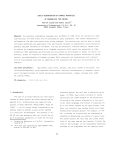
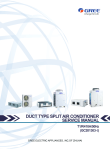
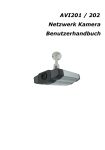
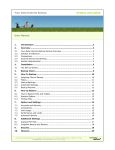
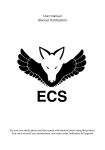
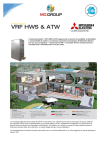
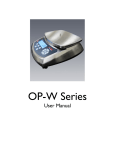
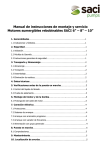
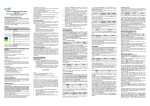
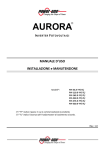
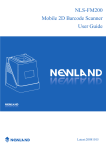
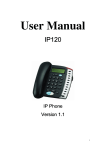
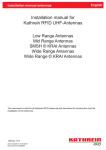
![PLAS A O ]-OR](http://vs1.manualzilla.com/store/data/005852706_1-5db0b7ed584537f0e62af161fb124638-150x150.png)
